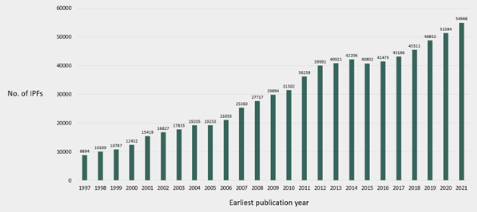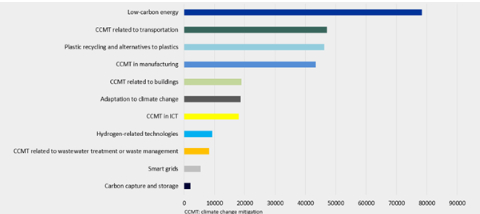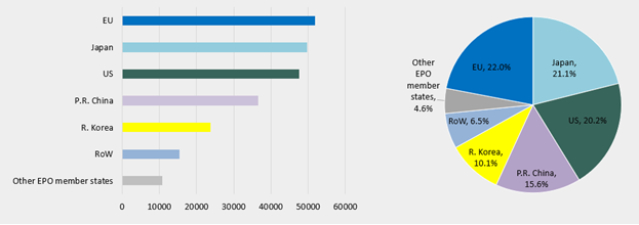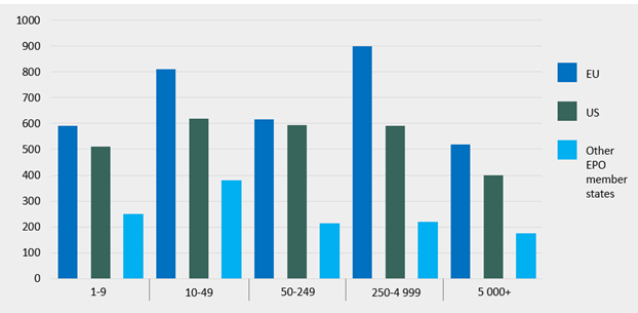Industry-specific studies are a valuable tool to understand the mindset and priorities of others in your industry. In addition, understanding trends within your industry enhances discussions about your intellectual property strategy. However, it can be time-consuming to ascertain the relevant parameters to provide meaningful statistics.
Whilst speaking at Sustainable Fuels Europe Summit 2025 (SFES) in Madrid, Jamie Barcombe shared statistics produced by the EPO on patenting in the Cleantech industry, confirming that patents are of growing importance across the industry. The EPO study, Trends in International Patent Families (IPFs) in cleantech worldwide, 1997-2021, indicates that patent filings have been gradually increasing throughout the studied time period, with almost 55,000 patent families publishing in 2021 (Fig. 1).

Figure 1
These publications span a broad array of technologies falling under the umbrella of "Cleantech" (Fig. 2). Consistent with many of the topics discussed at SFES, low-carbon energy saw the highest number of filings, followed by climate change mitigation (CCMT) related to transportation and plastic recycling/alternatives to plastics. The focus on low-carbon energy is likely linked to regulatory mandates by the EU and other jurisdictions intended to reduce global reliance on fossil fuels. For instance, in aviation, the cost of sustainable aviation fuels (SAF) is typically 2-3x higher than those of traditional aviation fuels. Technology improvements are needed to reduce the cost of producing SAF. Without such cost reduction, the mandated increase in usage is expected to mean higher costs for consumers.

Figure 2
In 2021, EU companies were responsible for more Cleantech application publications than any other country or region, closely followed by Japan and the USA (Fig. 3). However, more recent data shows that publications from Chinese applicants have surpassed those of EU, Japanese, and US applicants.

Figure 3
The final statistic of particular note is the size of companies that are filing. When assessing trends in an industry, it can be valuable to understand the mentality of others with similar resources. The EPO study utilized firm size as a means of characterizing this. The data shows that patent filing is of strategic importance to companies of all sizes: from start-ups and spin-outs with a handful of employees through to multinational corporations with 5000+ employees (Fig. 4).

Figure 4
The study as a whole shows a positive trend in Cleantech innovation, and indicates that patent filing is an attractive strategy for protecting your innovation in the Cleantech space.
The content of this article is intended to provide a general guide to the subject matter. Specialist advice should be sought about your specific circumstances.


